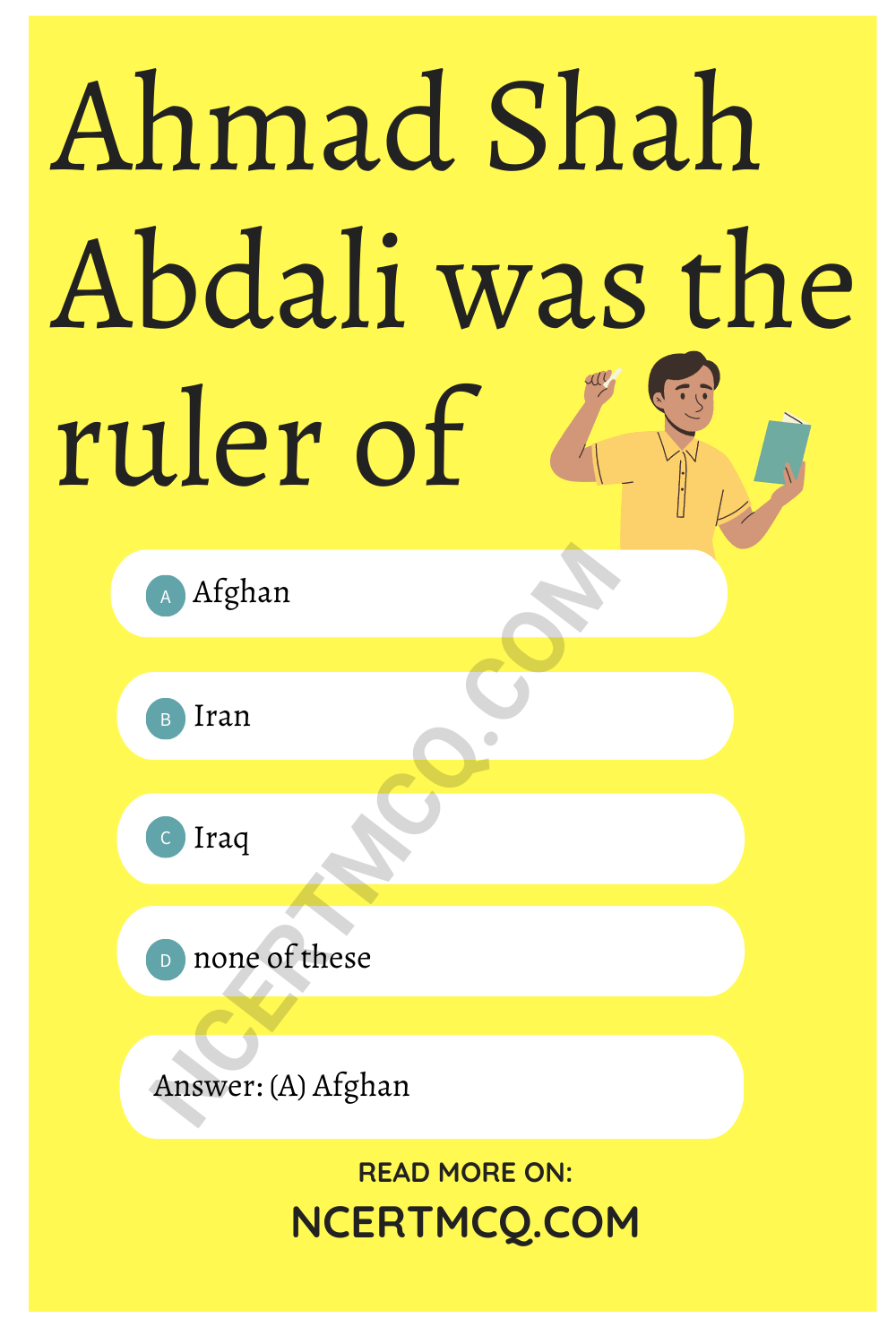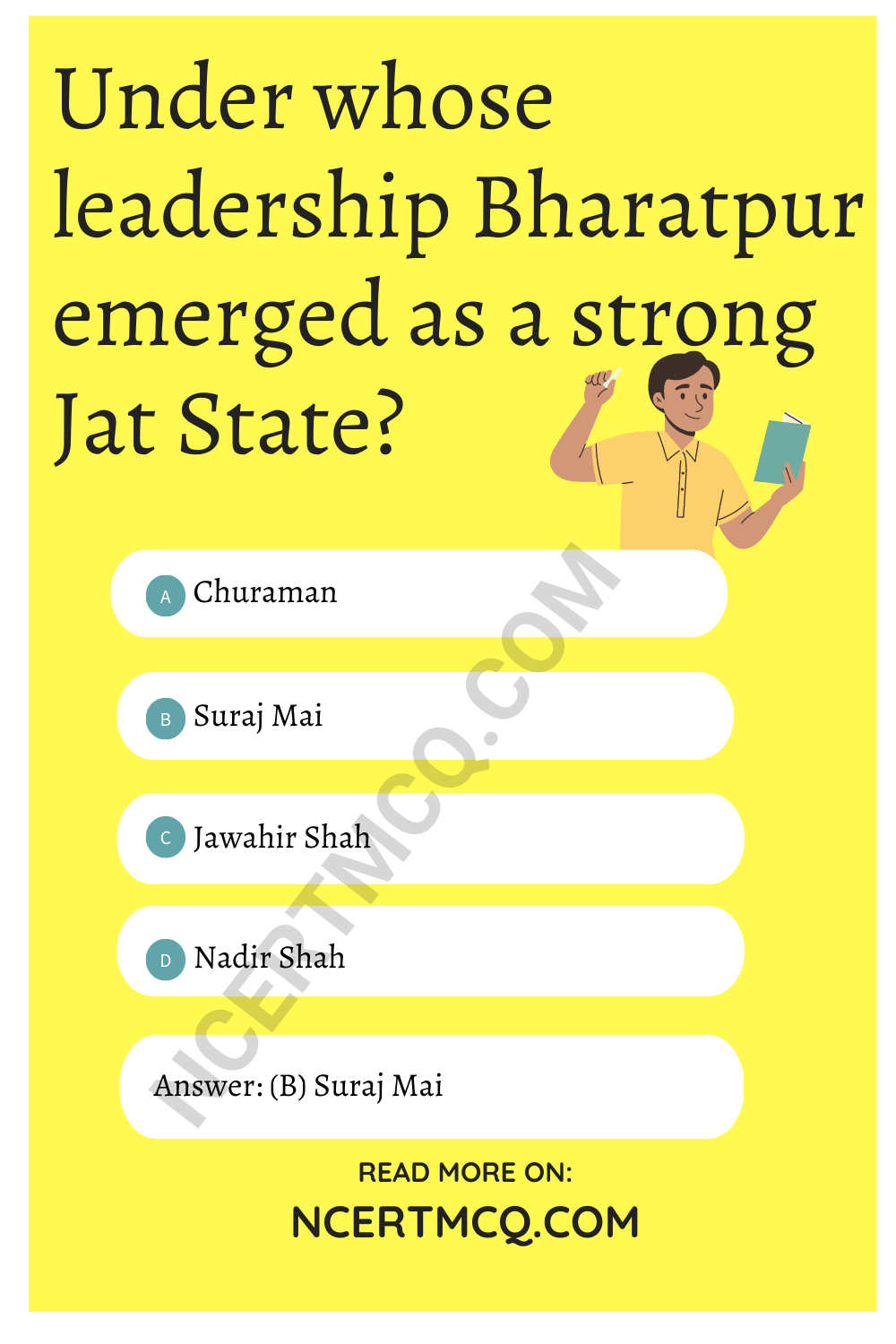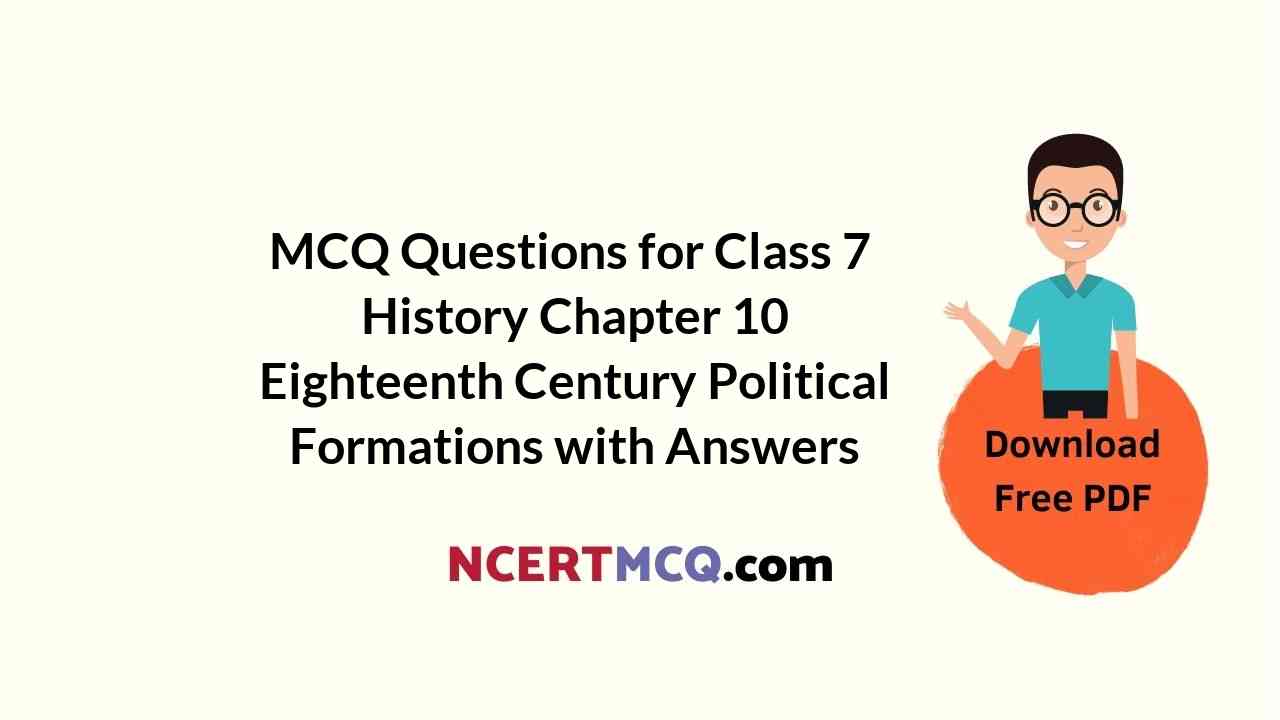Check the below Online Education NCERT MCQ Questions for Class 7 History Chapter 10 Eighteenth Century Political Formations with Answers Pdf free download. MCQ Questions for Class 7 Social Science with Answers were prepared based on the latest exam pattern. We have Provided Eighteenth Century Political Formations Class 7 History MCQs Questions with Answers to help students understand the concept very well.
Students can also visit the most accurate and elaborate NCERT Solutions for Class 7 History Chapter 10 Eighteenth Century Political Formations. Every question of the textbook has been answered here.
Class 7 Social Science History Chapter 10 MCQ With Answers
History Class 7 Chapter 10 MCQs On Eighteenth Century Political Formations
Class 7 History Chapter 10 MCQ Question 1.
The British East India Company established its power after
(a) 1757
(b) 1761
(c) 1768
(d) 1771
Answer
Answer: (a) 1757
Eighteenth Century Political Formation MCQ Question 2.
Aurangzeb had depleted the military and financial resources by fighting a long war in the
(a) East India
(b) North India
(c) Deccan
(d) none of these
Answer
Answer: (c) Deccan
Eighteenth Century Political Formation Class 7 MCQ Question 3.
Aurangzeb died in the year
(a) 1700
(b) 1710
(c) 1725
(d) 1707
Answer
Answer: (d) 1707
MCQ Questions For Class 7 History Chapter 10 Question 4.
Ahmad Shah Abdali was the ruler of
(a) Afghan
(b) Iran
(c) Iraq
(d) none of these
Answer
Answer: (a) Afghan

Class 7 History Ch 10 MCQ Question 5.
Ahmad Shah Abdali invaded North India times between 1748 and 1761.
(a) 3
(b) 4
(c) 5
(d) 6
Answer
Answer: (c) 5
Ncert Class 7 History Chapter 10 MCQ With Answers Question 6.
During which century the Mughal Empire declined?
(a) 18th
(b) 16th
(c) 19th
(d) 21th
Answer
Answer: (a) 18th
Ncert Class 7 History Chapter 10 MCQ Question 7.
Which of the following enjoyed the zat rank of 7000?
(a) Asaf Jah
(b) Murshil Quli Khan
(c) Both of these
(d) None of these
Answer
Answer: (c) Both of these
Ch 10 History Class 7 MCQ Question 8.
Who were the Telugu warrior chiefs’?
(a) Nayakas
(b) Jathas
(c) Misl
(d) All of these
Answer
Answer: (a) Nayakas
MCQ For Class 7 History Chapter 10 Question 9.
Who was the powerful governor of Bengal?
(a) Sa’adat Khan
(b) Murshid Quli Khan
(c) Asaf Jah
(d) Alivardi Khan
Answer
Answer: (b) Murshid Quli Khan
MCQ On 18th Century Political Formation Question 10.
During whose rule Jagat Seth became prosperous in Bengal?
(a) Murshil Quli
(b) Sa’adat Khan
(c) Alivardi Khan
(d) Asaf Jah
Answer
Answer: (c) Alivardi Khan
Chapter 10 History Class 7 MCQ Question 11.
Sawai Jai Singh founded his new capital here:
(a) Malwa
(b) Amber
(c) Jodhpur
(d) Jaipur
Answer
Answer: (d) Jaipur
Class 7 Chapter 10 History MCQ Question 12.
Dalkhalsa was set up in 1699 by
(a) Guru Nanak Singh
(b) Guru Tegh Bahadur
(c) Guru Gobind Singh
(d) Guru Har Kishan
Answer
Answer: (c) Guru Gobind Singh
Class 7 History Chapter 10 MCQ With Answers Question 13.
Small political groups of the Sikhs were called
(a) Khalsa
(b) Misls
(c) Dalkhalsa
(d) none of these
Answer
Answer: (b) Misls
History Class 7 Chapter 10 MCQ Question 14.
Chauth was the ……….. of the land revenue.
(a) 10%
(b) 20%
(c) 25%
(d) 30%
Answer
Answer: (c) 25%
Cbse Class 7 History Chapter 10 MCQ Question 15.
Who was the founder of Maratha empire?
(a) Shivaji
(b) Tipu Sultan
(c) Raja Jai Singh
(d) None of these
Answer
Answer: (a) Shivaji
Question 16.
Shivaji adopted the title of Chhatrapati in
(a) 1701
(b) 1760
(c) 1752
(d) 1762
Answer
Answer: (d) 1762
Question 17.
Tax levied by Marathas was called
(a) zat
(b) sardeshmukhi
(c) umara
(d) none of these
Answer
Answer: (b) sardeshmukhi
Question 18.
Under whose leadership Bharatpur emerged as a strong Jat State?
(a) Churaman
(b) Suraj Mai
(c) Jawahir Shah
(d) Nadir Shah
Answer
Answer: (b) Suraj Mai
 Match the contents of Column A with that of Column B:
Match the contents of Column A with that of Column B:
| Column A | Column B |
| 1. Sadat Khan | (a) Hyderabad |
| 2. Murshid Quli Khan | (b) Gujarat |
| 3. Asaf Jah | (c) Malwa |
| 4. Ijaradars | (d) Awadh |
| 5. Raja Ajit Singh | (e) Bengal |
| 6. Sawai Raja Jai Singh | (f) Revenue farmers |
Answer
Answer:
| Column A | Column B |
| 1. Sadat Khan | (d) Awadh |
| 2. Murshid Quli Khan | (e) Bengal |
| 3. Asaf Jah | (a) Hyderabad |
| 4. Ijaradars | (f) Revenue farmers |
| 5. Raja Ajit Singh | (b) Gujarat |
| 6. Sawai Raja Jai Singh | (c) Malwa |
Fill in the blanks with appropriate words:
1. Third battle of Panipat (1761) was fought between Marathas and ………….
Answer
Answer: Ahmad Shah Abdali
2. Ruler of Iran ………… plundered the city of Delhi in 1739.
Answer
Answer: Nadir Shah
3. Mughal nobles were divided in two factions, the ………….. and the …………..
Answer
Answer: Iranis, Turanis
4. Revenue in Bengal was collected in ……………
Answer
Answer: cash
5. Chief Minister of Marathas was called ……………..
Answer
Answer: Peshwa
6. System of rakhi offered protection to cultivators on payment of a tax of ……………. of produce.
Answer
Answer: 20%
State whether the given statements are true or false:
1. Nobles appointed as Governors by the Mughals had no control over Diwani and Faujdari.
Answer
Answer: False
2. Ahmad Shah Abdali invaded north India 5 times between 1748-1761.
Answer
Answer: True
3. Banking house of Jagat Seth became extremely prosperous during the rule of Murshid Quli Khan.
Answer
Answer: False
4. Khalsa was instituted in 1699.
Answer
Answer: True
5. Ranjit Singh was an important leader of Marathas.
Answer
Answer: False
6. Jats consolidated their power under the leadership of Churaman.
Answer
Answer: True
We hope the given NCERT MCQ Questions for Class 7 History Chapter 10 Eighteenth Century Political Formations with Answers Pdf free download will help you. If you have any queries regarding Eighteenth Century Political Formations CBSE Class 7 History MCQs Multiple Choice Questions with Answers, drop a comment below and we will get back to you soon.
Class 7 Social Science History MCQ:
- Tracing Changes Through a Thousand Years Class 7 MCQ
- New Kings and Kingdoms Class 7 MCQ
- The Delhi Sultans Class 7 MCQ
- The Mughal Empire Class 7 MCQ
- Rulers and Buildings Class 7 MCQ
- Towns, Traders and Craftpersons Class 7 MCQ
- Tribes, Nomads and Settled Communities Class 7 MCQ
- Devotional Paths to the Divine Class 7 MCQ
- The Making of Regional Cultures Class 7 MCQ
- Eighteenth Century Political Formations Class 7 MCQ
